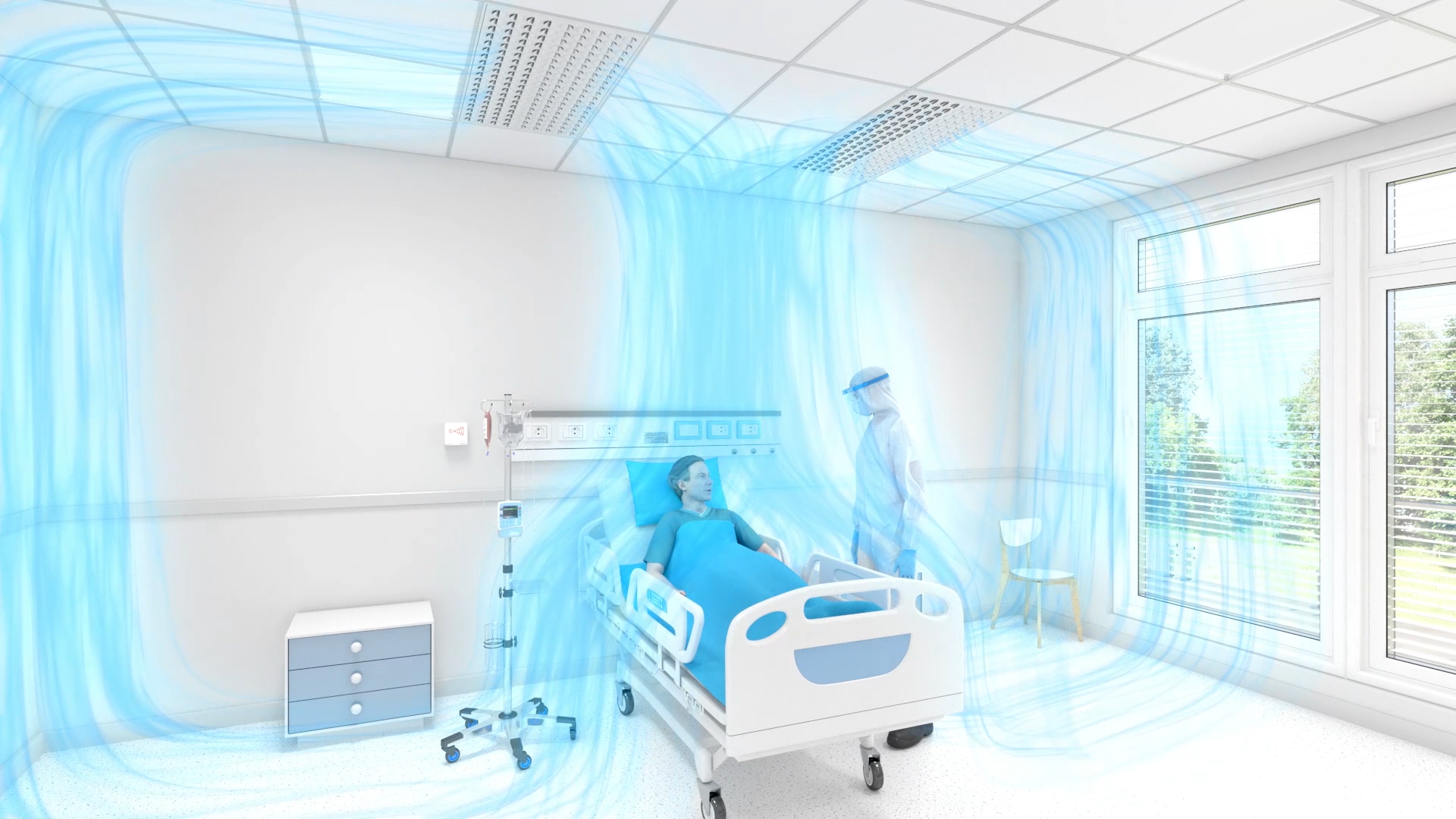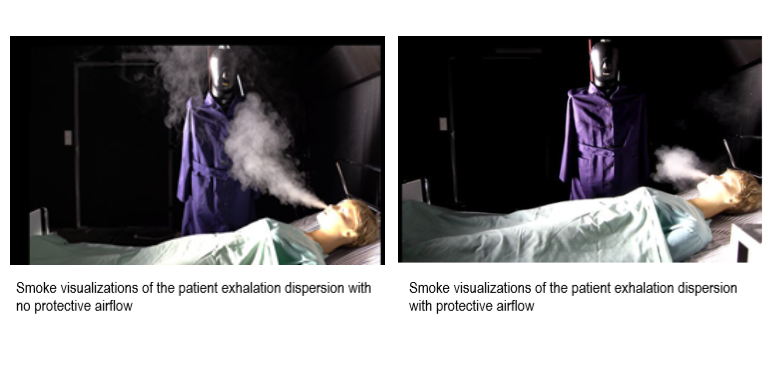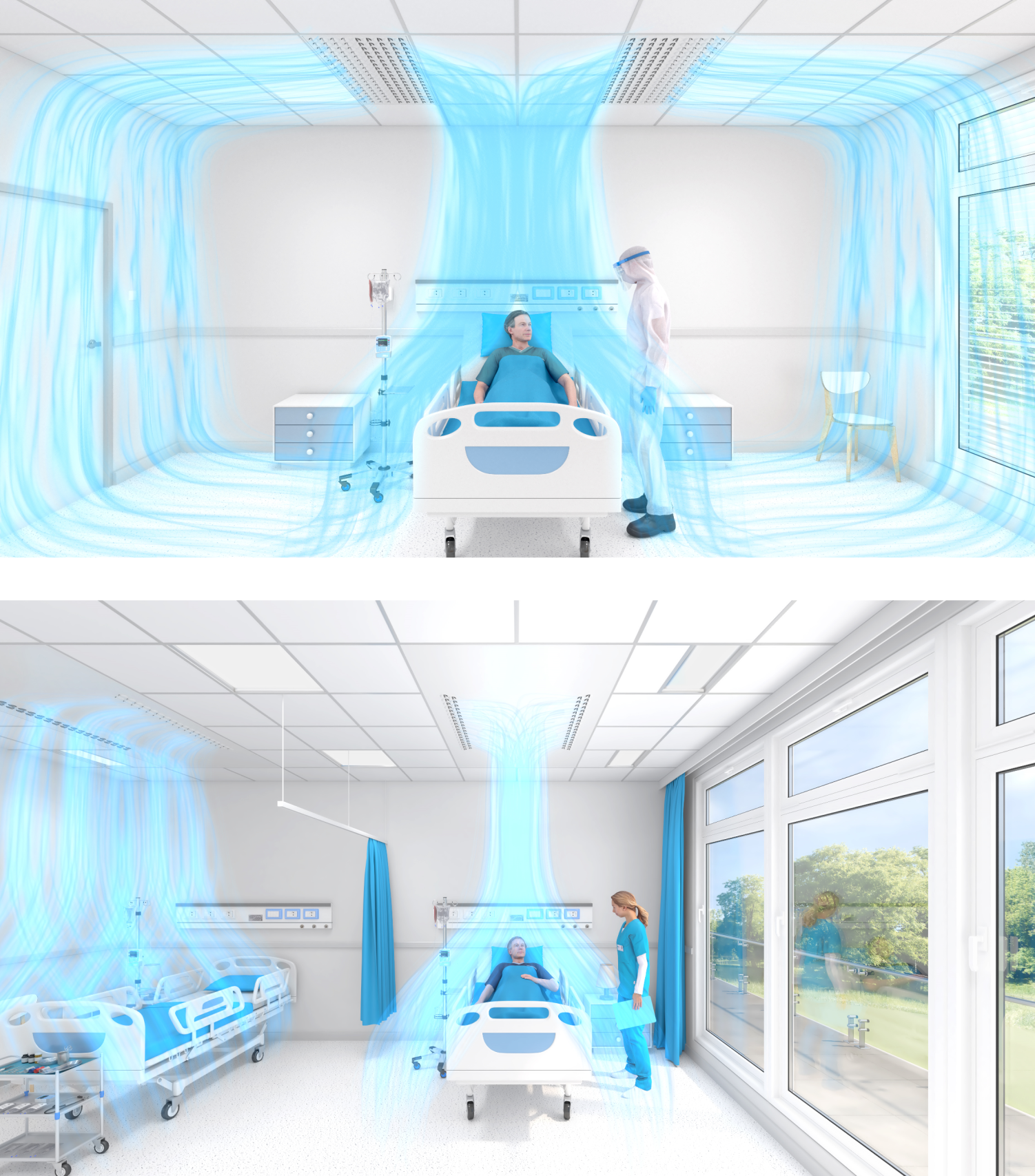

Protective airflow
In the hospital environments, the medical staff are highly exposed to pathogens from patients. To reduce the risk of infections and enhance the protection of the medical staff Halton created unique protective airflow solution. The supply airflow is designed to generate an airflow pattern that prevents bacteria exhaled by the patient from entering the breathing zone of medical staff which increases their safety.

The medical staff in patient rooms and especially in isolation rooms, are exposed to airborne contaminants. Wearing personal protective equipment, like masks, gloves, gowns etc. does not always guarantee complete protection against airborne infections for healthcare workers and visitors and hence complementary protection is needed. Typically, ventilation design guidelines suggest total volume mixing ventilation to be used in hospital isolation rooms[i]. However, this strategy might not always be the most effective option against airborne pathogens since medical staff can be exposed to high pathogen concentrations released by the patient especially when they are close to the patient giving care. Optimal supply air distribution design should dilute the high concentrations readily close to the source, direct the contaminants away from the healthcare staff breathing zone and still provide comfortable environment for the occupants.
[i] CDC 2005, DIN 1946-4, ASHRAE 170-2013

Bearing in mind the researches on the healthcare staff protection and risks of respiratory infection among them, Halton was working to create the protective airflow pattern that will protect the medical staff from the contamination from patients. The idea was to generate a barrier from the supply air, at the same time keeping thermal comfort at reasonable level for both – patient and medical worker. Tests of this solution were made at Turku University of Applied Science – the experiments were carried out in a full-scale patient room model in Indoor Environment laboratory. The objective of the measurements was to investigate how well the air distribution mode can perform under different operating conditions. The performance of the tested supply air distribution principle was evaluated with tracer gas measurements, smoke visualizations, thermal comfort measurements and air velocity measurements.

The lowest medical staff exposure index values were found with highest flow rates. However, the overall (measured) thermal comfort, that is described by PMV values, were found to be close to optimal values for all cases. Local mean age of air was found to be shorter in the patient breathing zone than in the main exhaust. This implied that the supply air distribution provided fresh air locally to the patient bed area, even with the low flow rates.
The tests showed that protective airflow using controlled zonal dilution ventilation principle can minimalize the medical staff exposure on patient exhale and thus potential infection of the staff.


Protective airflow in Halton solutions
The protective airflow pattern is now offered in two Halton Health solutions: Halton Vita Iso and Halton Vita Patient Room.
In Halton Vita Iso solution the protective airflow is generated by two Halton Vita HEPA diffusers with nozzles, each on the both side of the patient’s bed.
In Halton Vita Patient Room solution the protective airflow is available with radiant panel option.
Contact Us!
Our team looks forward to hearing from you. Please give us a call, send us an e-mail or fill in the form. We’ll be in touch with you shortly.
For inquiries, request for quotations, ask our specialist. We are here for you.
[contacts]